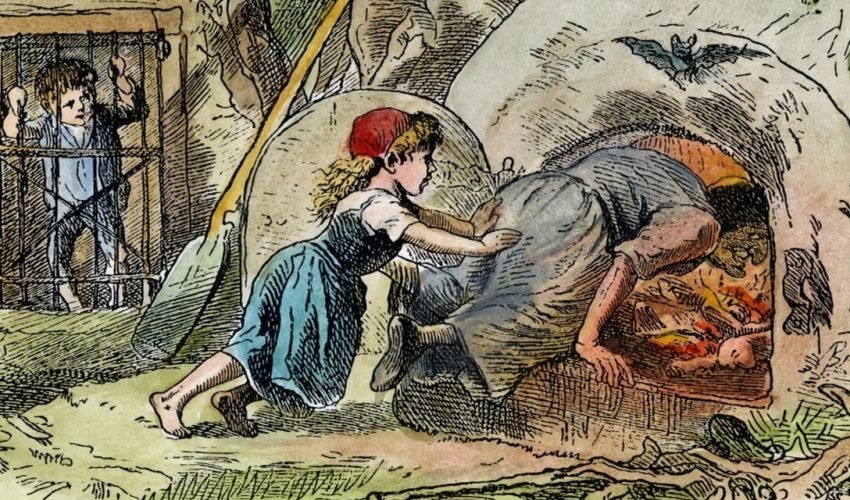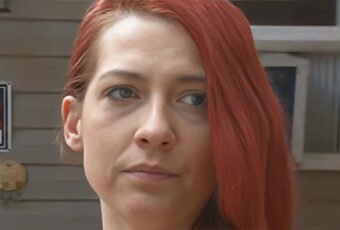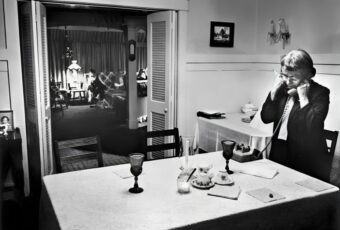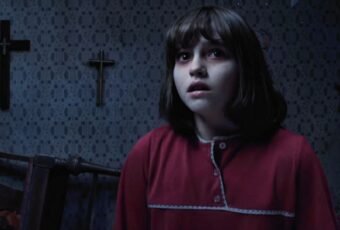The story of Hansel and Gretel was a result of the great tragedy, a great famine that struck Europe in 1314 when mothers abandoned their children and in some cases ate them.
The story features child abandonment attempted cannibalism, enslavement, and murder. The origins of the story are equally or more horrifying.
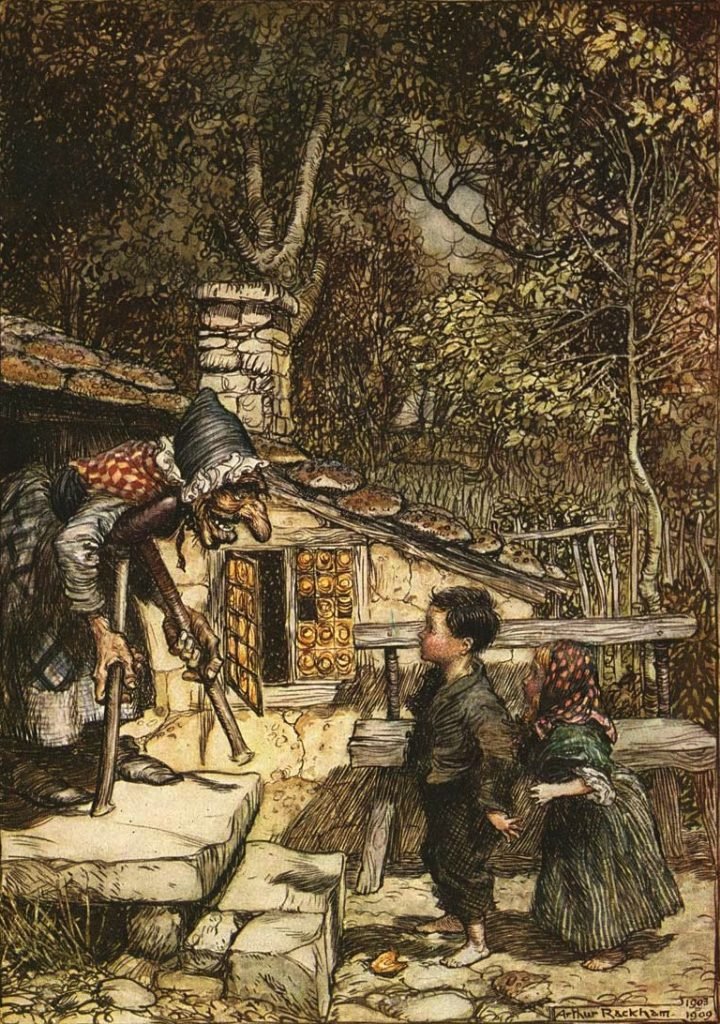
Hansel and Gretel Story
Many are familiar with the story but those who didn’t read it or never heard it, it focuses on a pair of children who are to be abandoned by their starving parents in the forest. Hansel and Gretel are children of a poor woodcutter.
When the famine hits over the land, woodcutter’s wife(stepmother of Hansel and Gretel) decides to take the children into the woods and leave them there so that she and her husband will not starve to death. The father wasn’t keen to leave them alone in the woods but reluctantly submits to his wife’s scheme.

The kids heard the plan and Hansel sneaks out of the house and gathers as many pebbles as he can, and return to his room, reassuring Gretel that God will not forsake them.
The next day when the family walks deeps into the woods, Hensel placed trails of white pebbles. Their father lights a fire for them in the woods and goes to gather more. When the kids realized that their father isn’t coming back, Gretel cries but Hansel tells her all will be fine. The kids return following the shiny pebbles to the house. The father is overjoyed and takes them back.
When the famine strikes again the stepmother insists that they take back their kids back to the forest to leave them. This time the stepmother locks the door so Hansel is able to gather the pebbles. Clever Hansel, though, crumbles up the small pieces of break he is given by his parents and sprinkles crumbs along their path.
Unfortunately for them, birds eat the crumbs, and they can’t find their way home. After searching for a very long time, they come upon a house in the woods made of bread, cakes, and sugar.
They eat from the house, as they’re very hungry. While they are eating, a witch comes out and invites them inside, offering them a meal, and pretending to be a kind and friendly old woman. After feeding them, she traps them in her house and makes them do chores each day, feeding them well in order to fatten them up for eating.
One day, the witch decides it is time to eat, and has Gretel light the oven and provide water for boiling her brother. After a while, the witch asks Gretel to hop in the oven to make sure it is hot enough to bake bread. Gretel, sensing the witch’s intent, pretends she does not understand what the witch means. Infuriated, the witch hops into the oven herself to demonstrate what she wants, and Gretel pushes the door closed behind her, leaving “the ungodly creature to be burned to ashes”.
Gretel frees Hansel from the cage and the pair discover a vase full of treasure and precious stones. Putting the jewels into their clothing, the children set off for home. They arrive home to hear that their stepmother has since died from unknown causes and their father has not had a happy day since they left their home. They live happily ever after with the witch’s wealth.
The Brothers Grimm
The modern world knows Hansel and Gretel from the works of German brothers Jacob and Wilhelm Grimm. The brothers were inseparable scholars, medievalists who had a passion for collecting German folklore. The brothers published over 200 stories in seven different editions of what has since become known in English as Grimm’s Fairy Tales.
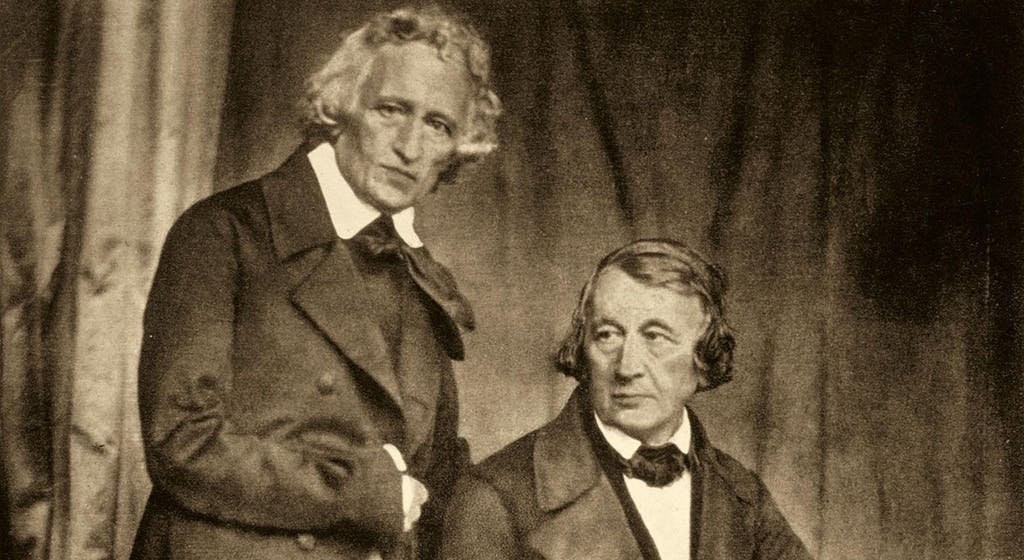
The early editions of the Grimm’s brothers work published as Kinder and H ausmärchen, or Children’s and Household Tales lacked illustrations. The stories were dark and filled with murder and mayhem. The stories nonetheless eventually caught on and had such a universal appeal, in the United States alone, alone, there have been over 120 different editions made.
The Grimm brothers weren’t just fairytale writers, they were fairytale collectors and many of their stories were either inspired by or borrowed elements from tales they heard and read elsewhere
The True Story Of Hansel and Gretel
The true story of Hansel and Gretel goes back to a group of tales that originates in the Baltic regions during the Great famine of 1314 to 1322. In Europe, the situation was particularly dire since the food supply was already scared. The results were devastating when the famine struck, one scholar estimated that over 400,000 square miles of Europe, 30 million people, and may have killed off up to 25 percent of the population in certain areas.

The process was hard on the elder people who chose voluntarily to starve to death to allow the young to live. Others committed infanticide or abandoned their children. Cannibalism was there, as it is believed that mothers were fed their children.
The famine was so bad that “people were so destroyed by hunger that they extracted bodies of the dead from cemeteries and removed the flesh from the skulls and ate it, and women ate their children out of hunger.” This chaos resulted in the origin of the story Hansel and Gretel.
All the stories dealt directly with themes of Abandonment and survival of Hansel and Gretel, every story had a forest that was sued for tableau for danger, magic, and death.
The forbidding of these early tales, though is a Romanian Sory, the Little boy, and the Wicked Stepmother. Similar to the Hansel and Gretel, two children are abandoned and find their way home following a trail of ashes. But when they return home following the trail of ashes, the stepmother kills the little boy and forces the little sister to prepare his corpse for a family meal.
The horrified girl did the same as her stepmother asked but hid the boy’s heart inside a tree. The father unknowingly eats his son while the sister refuses to take part. After the meal, the girl takes the brother’s bones and put them inside the tree with his heart. The next day a cuckoo bird emerges singing, “Cuckoo! My sister has cooked me, and my father has eaten me, but I am now a cuckoo and safe from my stepmother.”
The terrified stepmother throws a lump of salt at the bird but it just falls back on her head, killing her instantaneously.
Evolution of Story with new takes.
The direct source for the story of Hansel and Gretel as we know it came from Henrietta Dorothea Wild, a neighbor of the brothers Grimm who narrated many of the tales. She ended up marrying Wilhelm.
The original versions of the Hansel and Gretel changed over time, perhaps the brothers were aware that their stories were being read by children so by the last edition that they published, they changed the stories and made it kids friendly somewhat.
The story keeps evolving as there is no swan to help them in the first edition of the story but coming up to the seventh edition there is a swan to help them cross the river. The stepmother used to be the real mother of the children, who wanted to leave the kids in the forest, but a mother would not make a great villain, like a stepmother, thus mother was replaced by the stepmother in the upcoming editions.
Every once in awhile the tale attempts to go back to its dark roots. Orion Picture’s Gretel and Hansel: A Grim Fairy Tale. Oz Perkins brings out another new version of the story, siblings looking through the forest for food and working to help their parents when they meet the witch.
Now that you’ve read about Hensel and Gretel, Read about, Weird Rules every member of The Royal Family should Follow and then read about Stanley Mayer who invented the water-fueled car.
